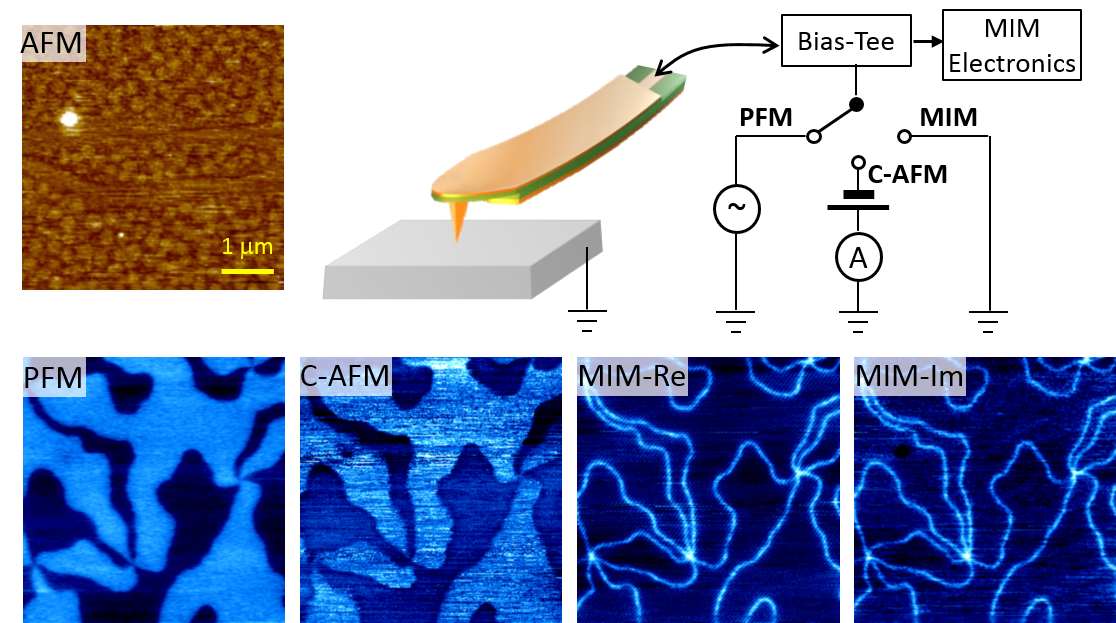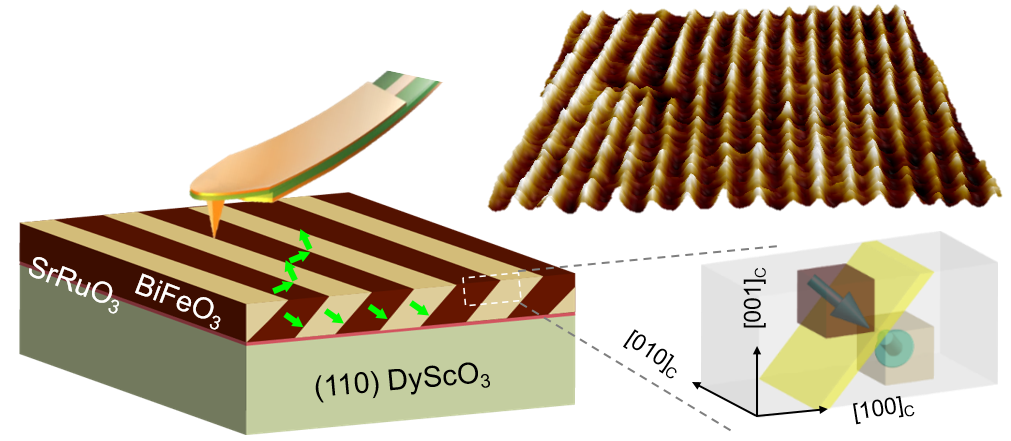Research: Ferroelectric domain walls
Domain walls in ferroic materials, across which the order parameter (strain, polarization, magnetization...) abruptly changes its orientation, can host emergent properties that are absent in the domains. Different from the conventional bulk measurements, the MIM directly probes the high-frequency dielectric response of different domains and domain walls. Our results indicate that the ferroic domain walls, with their own rich excitations, offer a new playground to explore emergent interfacial phenomena.

X. Wu et al. Science Advances 3 (5), e1602371 (2017)
(Top) AFM image of YMnO3 surface and schematic of the multi-mode SPM setup, where PFM, C-AFM, and MIM can be taken simultaneously. (Right) From left to right, PFM, C-AFM, MIM-Re, and MIM-Im images on the same YMnO3 sample. Clear domain wall contrast is seen in the MIM data, indicative of strong dielectric loss due to DW vibration.

Y.L. Huang et al. Advanced Materials 32, 1905132 (2020).
(Left) Schematic of MIM measurement on the BiFeO3/SrRuO3 thin film grown on (110) DyScO3 substrate, which exhibits stripe-like ferroelectric domains. (Bottom right) Close-up view of the polarization direction on both sides of the domain wall. (Top right) 3D rendering of the MIM image, showing strong domain wall signals over the domains. The unexpected giant ac conductivity may open a new avenue to implement DW nanodevices for radio-frequency applications.
This research is funded by the NSF Grants DMR-1649490, DMR-1707372, DMR-2004536, and ARO Instrumentation Grant W911NF-14-1-0483.